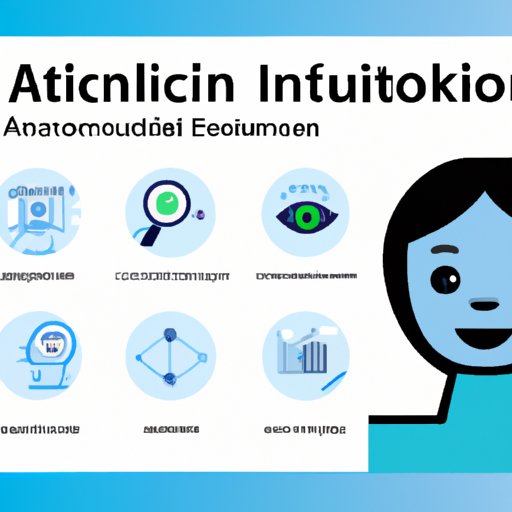Introduction
Artificial Intelligence (AI) is a branch of computer science that focuses on creating intelligent machines and programs capable of performing tasks that normally require human intelligence. AI can be used to automate repetitive tasks and processes, improve healthcare outcomes and access to services, enhance customer service, increase safety and security, and reduce poverty. In this article, we will explore how AI provides these benefits to society.

Automation of Repetitive Tasks and Processes
One of the most significant benefits of AI is its ability to automate repetitive tasks and processes. Automation is the process of using technology to perform tasks with minimal or no human intervention. By automating mundane and time-consuming tasks, businesses are able to save time and money while improving accuracy and efficiency. Automation also allows businesses to focus more resources on innovation and growth.
For example, AI can be used to automate bookkeeping and accounting processes, such as invoicing and payroll. AI can also be used to automate customer service tasks, such as answering customer inquiries and processing orders. Automation can even be used to automate marketing tasks, such as creating email campaigns and analyzing data.
Improved Healthcare Outcomes Through Predictive Analytics and Diagnostics
AI can also be used to improve healthcare outcomes by leveraging predictive analytics and diagnostics. Predictive analytics is the process of using data and analytics to make predictions about future events or trends. AI can be used to analyze large amounts of data to identify patterns and correlations that can help predict health outcomes. AI can also be used to diagnose medical conditions more accurately and quickly than humans.
For example, AI can be used to analyze patient data to identify patterns that indicate the risk of developing certain illnesses. AI can also be used to develop more accurate and personalized treatments for patients based on their individual health needs. Additionally, AI can be used to detect and diagnose diseases more quickly and accurately than traditional methods.

Enhancing Customer Service with Intelligent Chatbots
AI can also be used to enhance customer service by leveraging intelligent chatbots. Chatbots are computer programs designed to simulate conversations with customers. AI-powered chatbots can understand natural language and provide personalized responses to customer inquiries. Chatbots can also be used to automate customer service tasks, such as order processing and account management.
For example, AI-powered chatbots can be used to answer customer inquiries in real-time. Chatbots can also be used to provide personalized product recommendations and discounts to customers. Additionally, chatbots can be used to automate customer service tasks, such as order processing and account management.

Increasing Safety and Security with Facial Recognition Technology
AI can also be used to increase safety and security by leveraging facial recognition technology. Facial recognition technology is the process of using AI algorithms to recognize and identify individuals based on their facial features. Facial recognition technology can be used to verify identities, detect suspicious behavior, and monitor public areas for security purposes.
For example, AI-powered facial recognition technology can be used to verify identities at airports and other secure locations. It can also be used to detect suspicious behavior in public areas, such as detecting people loitering in an area or entering restricted areas. Additionally, facial recognition technology can be used to monitor public areas for security purposes, such as identifying potential threats.
Reducing Poverty Through Improved Access to Services and Resources
Finally, AI can be used to reduce poverty by improving access to services and resources. AI can be used to automate processes and tasks that would otherwise be too expensive or time-consuming for the poor to access. AI can also be used to improve access to educational resources by providing personalized learning experiences tailored to individual needs. AI can also be used to improve access to financial services, such as credit and insurance.
For example, AI can be used to automate processes such as loan applications and credit scoring. AI can also be used to provide personalized learning experiences to students from low-income backgrounds. Additionally, AI can be used to provide financial services, such as microloans and insurance, to underserved populations.
Conclusion
In conclusion, AI provides numerous benefits to society, including automation of repetitive tasks and processes, improved healthcare outcomes, enhanced customer service, increased safety and security, and reduced poverty. As AI continues to evolve and become more sophisticated, it has the potential to have an even greater impact on society in the future.
(Note: Is this article not meeting your expectations? Do you have knowledge or insights to share? Unlock new opportunities and expand your reach by joining our authors team. Click Registration to join us and share your expertise with our readers.)
